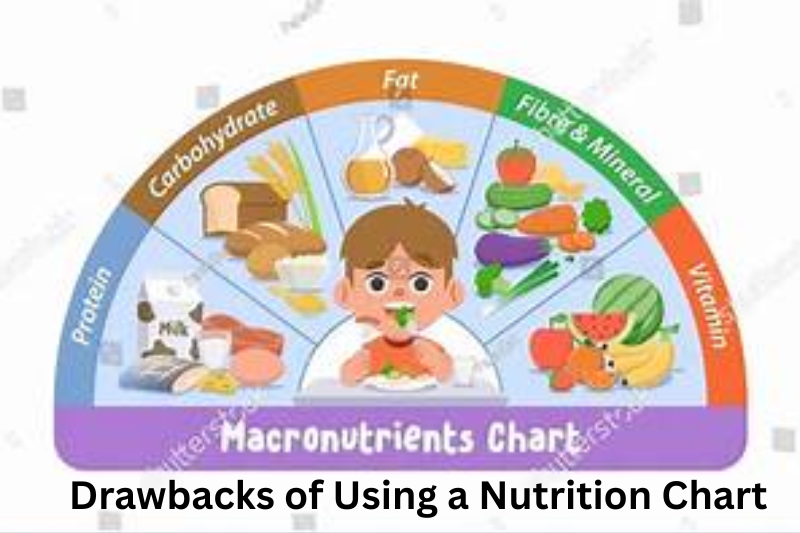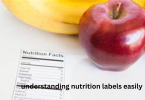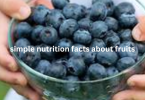Understanding what you eat is easier when you have a clear guide, and that’s where a healthy food nutrition chart explained comes in. This simple tool breaks down the calories, proteins, fats, vitamins, and minerals in the foods you eat, helping you make smarter choices for your health. Whether you’re planning meals, managing weight, or just curious about what’s in your food, knowing how to read and use a healthy food nutrition chart explained can transform the way you approach eating every day.
What Is a Healthy Food Nutrition Chart?

A healthy food nutrition chart is essentially a table that shows what nutrients are in the food you’re about to eat. It’s a quick reference to understand:
- Calories: How much energy you’re getting
- Macronutrients: Carbs, protein, and fat
- Micronutrients: Vitamins and minerals your body needs
- Other information: Sugar, sodium, fiber, and more
In simple terms, it’s like a “nutrition snapshot” — giving you the facts so you can make informed choices.
Why Should You Care About Nutrition Charts?
Most people want to eat better but feel lost when trying to make choices. Nutrition charts help you:
- Understand what’s in your food: No more guessing.
- Plan balanced meals: Make sure your body gets the right nutrients.
- Monitor calories: Helps with weight management without strict dieting.
- Avoid hidden additives: Too much sugar, sodium, or unhealthy fats can sneak in unnoticed.
- Boost long-term health: Balanced nutrition supports energy, immunity, and overall wellness.
Basically, it’s your guide to eating smart and feeling good.
Breaking Down a Healthy Food Nutrition Chart
Let’s go through the most common elements you’ll see.
1. Serving Size
- This tells you how much the chart is based on.
- Important: If you eat twice the serving size, you’re consuming double the calories, fats, and other nutrients.
2. Calories
- Calories = energy. You need them to fuel your body.
- Too many calories can cause weight gain; too few can leave you tired.
- A healthy chart helps you keep track without obsessing.
3. Macronutrients
These are nutrients your body needs in large amounts.
Carbohydrates
- Your body’s main source of energy
- Focus on complex carbs like whole grains, vegetables, and fruits
- Avoid refined carbs like white bread or sugary drinks
Protein
- Essential for building muscles, repairing tissues, and immune function
- Sources: chicken, fish, eggs, beans, lentils, tofu
Fat
- Needed for brain function, hormones, and cell health
- Choose healthy fats: olive oil, avocado, nuts
- Limit trans fats and saturated fats
4. Fiber
- Keeps your digestion healthy
- Helps control blood sugar and cholesterol
- Found in oats, whole grains, fruits, and vegetables
5. Vitamins and Minerals
These are micronutrients, meaning you need them in smaller amounts but they’re vital for life. Common ones you’ll see:
- Vitamin A: Vision, skin, immunity
- Vitamin C: Immunity, healing, collagen production
- Vitamin D: Bone health, mood regulation
- Calcium: Strong bones and teeth
- Iron: Energy, oxygen transport in blood
- Potassium: Heart, muscle, nerve function
6. Sugar & Sodium
- Sugar: Natural sugars (from fruits) are fine. Avoid added sugars.
- Sodium: Too much salt can raise blood pressure. Check nutrition charts to keep it in check.
Healthy Food Nutrition Chart Example
Here’s a simple example for 1 cup of cooked quinoa:
| Nutrient | Amount |
| Calories | 222 |
| Carbohydrates | 39g |
| Protein | 8g |
| Fat | 4g |
| Fiber | 5g |
| Sugar | 1g |
| Sodium | 13mg |
| Iron | 15% DV |
| Calcium | 2% DV |
| Potassium | 9% DV |
Looking at this, you can see quinoa is a nutrient-dense food: high in protein, fiber, and essential minerals.
Benefits of Using a Healthy Food Nutrition Chart
- Better Awareness of Food Choices
- Helps you make informed decisions rather than guessing.
- Helps you make informed decisions rather than guessing.
- Supports Weight Management
- Knowing calories and macros helps you maintain, lose, or gain weight healthily.
- Knowing calories and macros helps you maintain, lose, or gain weight healthily.
- Encourages Balanced Eating
- Ensures you get enough protein, carbs, fats, vitamins, and minerals.
- Ensures you get enough protein, carbs, fats, vitamins, and minerals.
- Helps Detect Hidden Ingredients
- Spot added sugars, sodium, or unhealthy fats that could affect health.
- Spot added sugars, sodium, or unhealthy fats that could affect health.
- Improves Long-Term Health
- Helps prevent deficiencies, improve energy, and lower risk of chronic diseases.
- Helps prevent deficiencies, improve energy, and lower risk of chronic diseases.
You may also like to read these posts:
Low Calorie Recipes for Weight Loss: Eat Smart, Feel Great, and Stay Full
Nutritious Breakfast and Dinner Ideas: A Complete Guide to Eating Healthy Every Day
Healthy Food Recipes for Daily Diet
Best Healthy Recipes for Busy People: Simple, Delicious, and Nutritious Meals You Can Make Anytime
Drawbacks of Using a Nutrition Chart

While incredibly useful, there are a few potential downsides:
- Can Be Overwhelming
- For beginners, all the numbers and percentages can feel like too much.
- For beginners, all the numbers and percentages can feel like too much.
- May Cause Obsession
- Some people focus too much on calories or carbs and forget about overall healthy eating.
- Some people focus too much on calories or carbs and forget about overall healthy eating.
- Not Always Accurate
- Packaged foods list averages; actual content can vary slightly.
- Packaged foods list averages; actual content can vary slightly.
- Doesn’t Measure Food Quality
- A nutrition chart shows nutrients, but not whether the food is ultra-processed or minimally processed.
- A nutrition chart shows nutrients, but not whether the food is ultra-processed or minimally processed.
Tips to Make the Most of Nutrition Charts
- Focus on overall patterns, not every single number
- Use charts to compare similar foods
- Prioritize whole, minimally processed foods
- Keep an eye on fiber, sugar, and sodium
- Remember: variety is key — no single chart tells the full story
Final Thoughts
A healthy food nutrition chart is a powerful tool for making smarter food choices. It helps you understand what you’re eating, plan balanced meals, and maintain long-term health. Like any tool, it works best when used wisely — not obsessively.
Start small: glance at labels, compare products, and gradually learn what your body truly needs. Before long, reading a nutrition chart will feel like second nature, guiding you toward healthier, more energetic, and happier days.
FAQs
1. What is a healthy food nutrition chart?
A healthy food nutrition chart is a table that shows the nutrients in a food item, including calories, proteins, fats, carbohydrates, vitamins, minerals, fiber, sugar, and sodium. It helps you make informed choices about what to eat.
2. Why should I use a nutrition chart?
Nutrition charts help you:
Understand what’s in your food
Monitor calories and macros
Make balanced meals
Avoid excess sugar, sodium, or unhealthy fats
Support long-term health
3. How do I read a nutrition chart?
Start by checking the serving size, then look at calories, macronutrients (carbs, protein, fat), fiber, sugar, sodium, and vitamins/minerals. Compare foods and choose options that meet your health goals.
4. Are nutrition charts always accurate?
Not 100%. Packaged foods use averages, so actual nutrients can vary slightly. For fresh foods like fruits and vegetables, charts provide a good estimate but not exact numbers.
5. Can I rely only on a nutrition chart for healthy eating?
No, charts are a helpful tool but don’t tell the full story. They don’t measure food quality or processing levels. Use them alongside a diet rich in whole, minimally processed foods.





